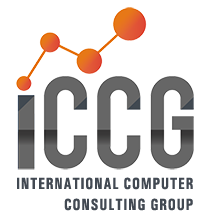Recent events have challenged restaurants and food services industries to be flexible, adaptive, and more aware that being able to anticipate what’s to come is a vital component for staying competitive in the present. It’s also taught the industry that that status quo and the legacy systems that prop up outdated assumptions work directly against those efforts. A movement towards digitalization that has been happening over the last few years and embraced by restaurant and food service industry leaders has helped businesses to build a solid foundation for success.
Cloud infrastructure, SaaS, and cloud technology for restaurants and food services deployed to all brand locations has helped organizations to address the seismic shift that the industry is facing right now. How has this technology done this? How do the challenges and successes of the present point the way to resilience in the future? Let’s take a look.
Read More
Topics: Food & Beverage, Distribution, Supply Chain, Food Technology, CloudSuite Food & Beverage, Enterprise Software
For years, food and beverage manufacturers have been concerned with short shelf life, inventory planning, and margin pressures. In today's competitive landscape, yesterday’s supply chains have had to adapt and change to respond to today’s consumer expectations of healthier choices, greater ingredient transparency, and the more options for online or e-commerce shopping.
This health and wellness trend isn't new. What’s new is the level of growth we’re seeing in the market for consumers that want a healthier lifestyle—and are in fact, demanding it from their food habits and purchases. Food and beverage manufacturers are doing their best to meet this trend with cleaner labels, more plant-based options, and more ethically sourced food. Both new product introductions and long-standing products in the market are being updated with healthier ingredients to replace preservatives, saturated fat, sugar, sodium, or genetically modified (GMO) ingredients.
Read More
Topics: ERP, Food & Beverage, Supply Chain, Food Technology, CloudSuite Food & Beverage, Infor M3 ERP, Enterprise Software, WMS, Supply Chain Management
It seems like you can’t look at any enterprise software solution that doesn’t mention Artificial Intelligence (AI) these days. Everyone is touting their AI this or AI that. It’s the buzzword of the Industry 4.0 world and while most of this is likely hype more than substance, Infor is doing something extremely unique ... connecting the entire manufacturing framework to maximize an employee’s time on the shop floor.
There are so many factors to consider in any given skilled position on the manufacturing floor. Like these.
Read More
Cloud technology in the hospitality industry is changing the way that hotels, resorts, and gaming organizations serve guests. The deciding factor to success is in how simple it is for a guest to get what they want from a hotel via their own personal devices even before they arrive at a location. Essential mobile-based technology enables them to book a room, to set arrival times, to upgrade a room, add services, and more, all without necessarily having to make contact with staff.
That call for contactless solutions delivered via cloud PMS is a priority for the industry right now. This is for convenience reasons. Yet it also has social implications in an era of maintaining distance and limiting contact. How do cloud-based solutions make that easier than legacy on-premises solutions? Let’s take a look at some of the details.
Read More
Topics: ERP, Food & Beverage, Distribution, Supply Chain, Supply Chain Visibility, digital disruption, Enterprise Resource Planning, Food Technology, CloudSuite Food & Beverage, Enterprise Software, Retail Supply Chain, Supply Chain Operations, Infor CloudSuite M3, Infor CloudSuite ERP
Supply chain management’s most common problem
No industry seems to be immune to today’s challenges. The unprecedented uncertainty and volatility in the market due to geo-political strife, climate disasters or global pandemics has shown time and again that traditional, linear supply chain management strategies simply don’t work anymore. It’s time to leave the enterprise-centric mentality in the rearview mirror and adopt a networked approach to supply chain management.
But that’s just the first step. Beyond addressing uncertainty, your business is pressured by a continued need to optimize all facets of supply chain costs. Understanding the costs associated with working capital and service level expectations has never been more critical regardless of your industry or sector.
Read More
Topics: Digital Transformation, Supply Chain, Supply Chain Network, Technology, Sustainability
The fact is managed services are on the rise and in high demand by customers worldwide—and, with good reason. They are an ideal way for customers to get the on-demand expertise they need at a predictable cost. With Infor Managed Services, our goal is to provide customers the long-term support and post-go-live services that coincide with the double-decade lifespan they expect from their Infor application investment.
Read More
Topics: Digital Transformation, ERP, Manufacturing, Food & Beverage, Webinar, Process Manufacturing, Artificial Intelligence, Fashion PLM
As fashion organizations grow to introduce new products or clothing lines, acquire other companies, shift priorities, and change channels to market, key stakeholders can be left out of the conversation. A networked approach to running your company can solve these problems. Collaborative networks work because they engage internal and external partners, workers, and stakeholders, helping to incentivize and execute supply chain processes more effectively than ever before.
New insights will continue to emerge as consumer behaviors shift and production opportunities evolve, but a continuously synchronized and updated network can keep you agile from sketch to store by making critical information accessible to colleagues, organizations, suppliers, and customers. Collaborative networks work to improve customer service, maximize margins, and minimize loss attributed to miscommunications such as missed inventory targets, downtime, spoilage, and other challenges.
Read More
Topics: ERP, Fashion & Retail, Distribution, Supply Chain, Fashion & Apparel, Supply Chain Visibility, Supply Chain Network, Cloudsuite Fashion & Apparel, Infor CloudSuite PLM for Fashion, Infor CloudSuite Fashion PLM, Enterprise Software, Infor CloudSuite Fashion, Supply Chain Operations, Supply Chain Management, Infor CloudSuite M3, Infor CloudSuite ERP
As industry attitudes and consumer behaviors change, so does the challenge of sustaining a business in the fashion industry. The global health crisis has accelerated the need for fashion and retail brand owners to reconsider their current business models to satisfy their digitally native consumers while maintaining omni-channel supply and ensuring sustainable production.
Whether large or small, fashion brands can turn these challenges into opportunities by transforming their business models. How does your organization meet the expectations and desires of today’s digital consumers? Are you still using old technology that might have served you well in the past but is now beyond its shelf life? If you already have an ERP system in place, there’s a good chance it’s no longer able to keep up with your business needs and growth aspirations.
Read More
Topics: ERP, Fashion & Retail, Distribution, Supply Chain, Fashion & Apparel, Enterprise Resource Planning, Fashion PLM, Cloudsuite Fashion & Apparel, Infor M3 ERP, Infor CloudSuite PLM for Fashion, Infor CloudSuite Fashion PLM, Enterprise Software, Infor CloudSuite Fashion, Supply Chain Management
Digitizing core processes in combination with trading partner connectivity, helps supply chain leaders increase responsiveness and adaptability. As more organizations look to remove manual tasks from their operations, the ability to update suppliers and trading partners in real-time allows supply chain processes to become more efficient. Here are three scenarios where moving to a network platform have helped companies generate additional value across their supply chain.
- A footwear provider experiencing rapid growth realized spreadsheets and manual processes were no longer sufficient to support increase demand and future progression. The brand digitally transformed sourcing, procurement, accounts payable, finance, and supplier management processes to support scale. The ability to digitally collaborate on orders, invoices, settlements, and ASN creation was foundational to the transformation. Witnessing 4X growth, the company today has 99.8% invoice accuracy and spends approximately 30 minutes per day processing invoices.
- A major global sports apparel brand sought to solidify the health of its supply base by ensuring access to capital. Utilizing a multi-enterprise network allowed the company to connect all parties and digitized document flow, enabling automated financing and settlement. A diverse portfolio of finance providers was plugged in to create a significant pool of credit and programs to meet varying needs. In doing so, the brand was able to enhance the financial health of its suppliers while deploying its own capital preservation program.
- An outdoor gear manufacturer having automated its PO, invoice, and settlement processes to generate efficiency was seeking further avenues to improve margins. It leveraged existing transaction data to auto-populate ASNs and packing and shipping instructions, enabling direct shipments from the factory. As a result, plans for new distribution center were deemed no longer necessary due to increased efficiency.
Read More
Topics: ERP, Manufacturing, Distribution, Rentals & Equipment, Supply Chain, Fashion & Apparel, Infor M3 ERP, Enterprise Software, Retail Supply Chain, WMS, Supply Chain Management
Know you want to transform but don't know where to start? Want to gain $9-12 for every dollar you spend? Read on to find out why starting with your people is the best first step to prioritizing digital transformation projects.
Digital transformation is at the top of the to-do lists of most companies, but one topic that is often missing from a discussion on digital transformation is which areas to prioritize. Most businesses can’t afford to completely overhaul a core function of the enterprise top to bottom, along with the technology that supports it, at any one time. Instead, they’ll target specific areas for transformation. That approach minimizes disruption to the business, keeps costs manageable, and helps the business apply lessons learned to future transformation projects. The question, though, is which areas to target first?
Read More
Topics: Digital Transformation, ERP, Manufacturing, Distribution, Rentals & Equipment, Supply Chain, Fashion & Apparel, Industrial Manufacturing, Digital Manufacturing, Infor M3 ERP, Enterprise Software, Retail Supply Chain, WMS, Supply Chain Management





.jpg)





